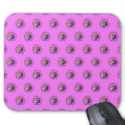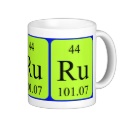|
|
Reference type: Journal
Authors: Zhang ZT, Dai S
Article Title: Fabrication of organic-inorganic nanocomposites via molecular imprinting on layered silicate.
Publication date: 2002
Journal: Abstracts of Papers of the American Chemical Society
Volume: 223
Issue: (INOR)
Page numbers: 054.
Alternative URL: http://www.chemistry.org/portal/resources/ACS/Subportals/inorganic/inor61.pdf
Abstract: Inorganic layered materials with crystalline structure have been studied extensively not only for their chemical and physical characteristics but for their potential use in many materials applications. Host-guest composites, which have been realized through the intercalation of guest molecules into inorganic layered hosts, represent a new class of premier advanced materials. The layered polysilicates, which are built up of one or multiple sheets of SiO4 tetrahedra with abundant hydroxyl siloxane surface, accommodates various organic substances to form intercalation compounds, organic groups can be grafted to these groups by reaction with organosilanes to modify the interlayer space. A class of paraffin-like organosilicate intercalates has been used to for elastomeric polymer-layered silicate nanocomposites. Our group has explored either using mesoporous materials by a double imprinting method or using microporous materials by a ship-in-bottle method for molecular imprinting previously. Here, we report ionic selective molecular imprinting occurred on the surface of layered crystalline structure silicates via ions exchange and intercalation of functonalized groups reactions, the complex of bifunctional siloxane ligands and target metal ions was coated on the surface of porous zeolitic crystalline host whose perfect periodicity may allow the generation of uniform imprints.
|


 SMI logo mousepad pink tiled
SMI logo mousepad pink tiled







 SMI logo mousepad orange
SMI logo mousepad orange







 Element 44 mug - Ruthenium
Element 44 mug - Ruthenium






